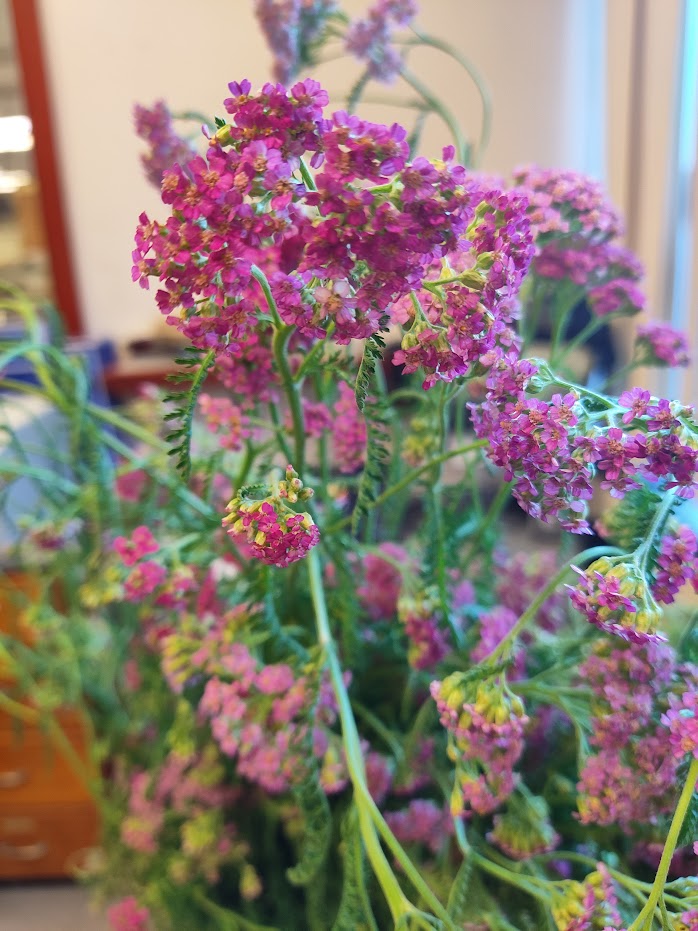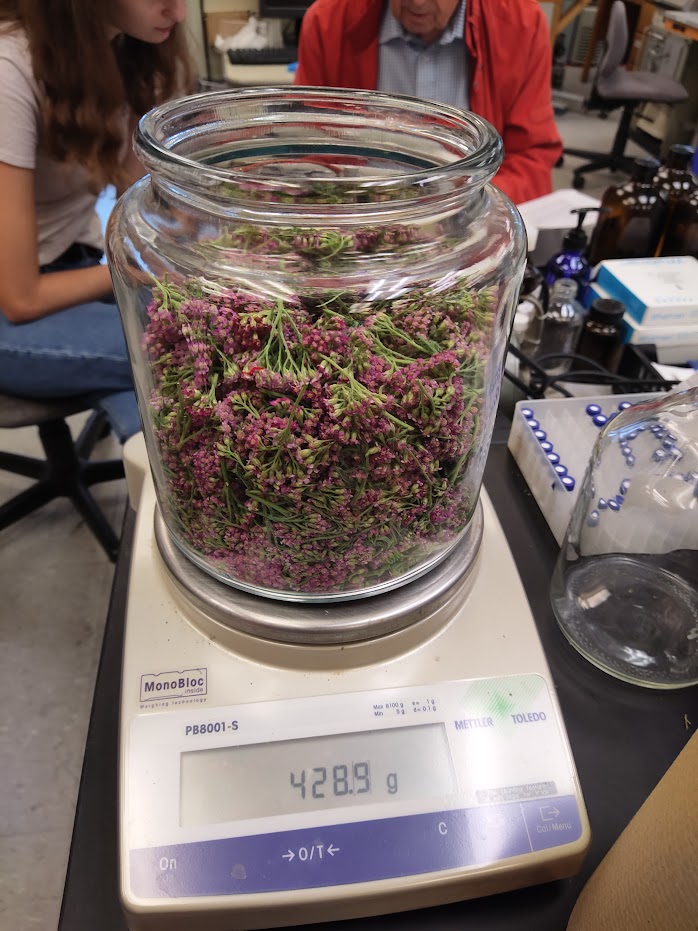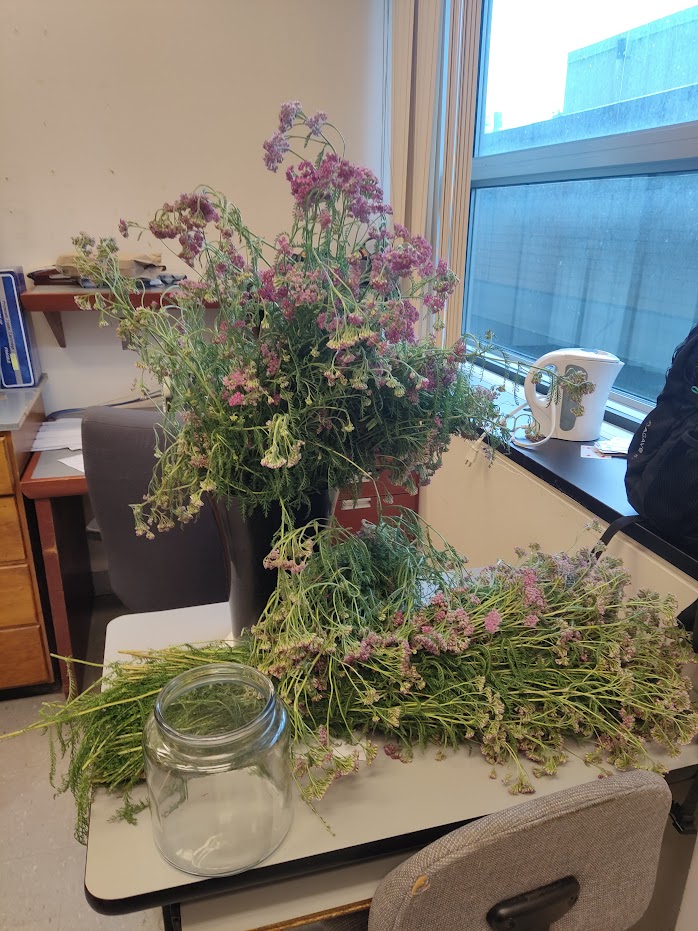
Tall Yarrow Hydrosol
Tall yarrow is a sweet-smelling plant native to Central and Eastern Europe, and Western Russia. The yarrow species has many varieties and subspecies, with colour variations including white, yellow, and many shades of purple and pinks. The variation used for this hydrosol has a deep pink/purple coloration.
The genus names for yarrow “Achillea” comes from the character in Greek mythology, Achilles, who was said to carry it with him to treat wounds obtained from battle. This is likely also the origin of one of yarrow’s many common names – soldier’s woundwort. The English word “yarrow” comes from the old Saxon name gearwe. Yarrow was commonly used in traditional medicine practiced by the Indigenous populations of North America, such as the Plains Indigenous people who used it to reduce fever and pains.
(1)Chandler, R. F.; Hooper, S. N.; Harvey, M. J. Ethnobotany and Phytochemistry of Yarrow, Achillea Millefolium, Compositae. Econ Bot 1982, 36 (2), 203–223. https://doi.org/10.1007/BF02858720.
(2)BRIT - Native American Ethnobotany Database. http://naeb.brit.org/uses/species/38/ (accessed 2023-08-10).

I’m Rose Anderson-Duvall, an USRA student working in the J. L. Holmes Mass Spectrometry Facility in summer 2023. I am an undergraduate student entering my third year of Biopharmaceutical Science at
uOttawa. My mother instilled a love of science in me when I was very young, and I never grew out of it. Studying hydrosols is, among many other things, a brilliant insight into the metabolites of plants, a perfect intersection between my two passions, biology and organic chemistry.
Working in this laboratory, I’ve learned how to analyze, identify, and quantify compounds
using the GC-MS in addition to learning various extraction techniques for making hydrosols.

Creation of Yarrow Hydrosol
428.9g of yarrow flowers were put into a microwave distillation vessel along with a 400mL beaker. A 250mL ice cone was fitted to the lid and the whole vessel was put into a microwave and set to run on high power for 9 minutes. After this, the liquid collected in the beaker was emptied into a collection bottle and replaced into the vessel. A new ice cone was fitted to the lid and the process was repeated twice more. A total of 0.75L of yarrow hydrosol was collected.

Analysis of Hydrosol
The yarrow hydrosol was put through SPE (solid phase extraction) prior to being injected into the GC-MS. This is done in order to separate the analytes from the water and elute them with a nonpolar solvent (1:1 MeOH:ACN). It also ensures larger particles which may damage the GC column are removed.
The yarrow feather hydrosol was a fairly simple hydrosol containing only five compounds. The compound present in the highest concentration in the hydrosol was eucalyptol, present at a concentration of 13.9 mg/L. This is followed by camphor, which is present at 11.5mg/L. The hydrosol also contained borneol and α-terpineol, both present at concentrations of 4.1mg/L. It also contained a small amount of terpinene-4-ol, present at a concentration of 2.7mg/L.

Conclusion
The purple yarrow flower hydrosol contained only five compounds. The compound present at the highest concentration was eucalyptol. Eucalyptol has been shown to have anti-inflammatory effects and may be effective at reducing pain as well as opening airways in people with asthma by reducing bronchial inflammation. The hydrosol also contains some camphor, which is a mild analgesic. For this reason, the hydrosol may have therapeutic applications, such as use in a pain-relieving lotion.
Bhowal, M.; Gopal, M. Eucalyptol: Safety and Pharmacological Profile. RGUHS J Pharm Sci 2016, 5, 125–131. https://doi.org/10.5530/rjps.2015.4.2.
Rivera, H. L.; Barrueto, F. Camphor. In Encyclopedia of Toxicology (Third Edition); Wexler, P., Ed.; Academic Press: Oxford, 2014; pp 627–629. https://doi.org/10.1016/B978-0-12-386454-3.00704-1.
